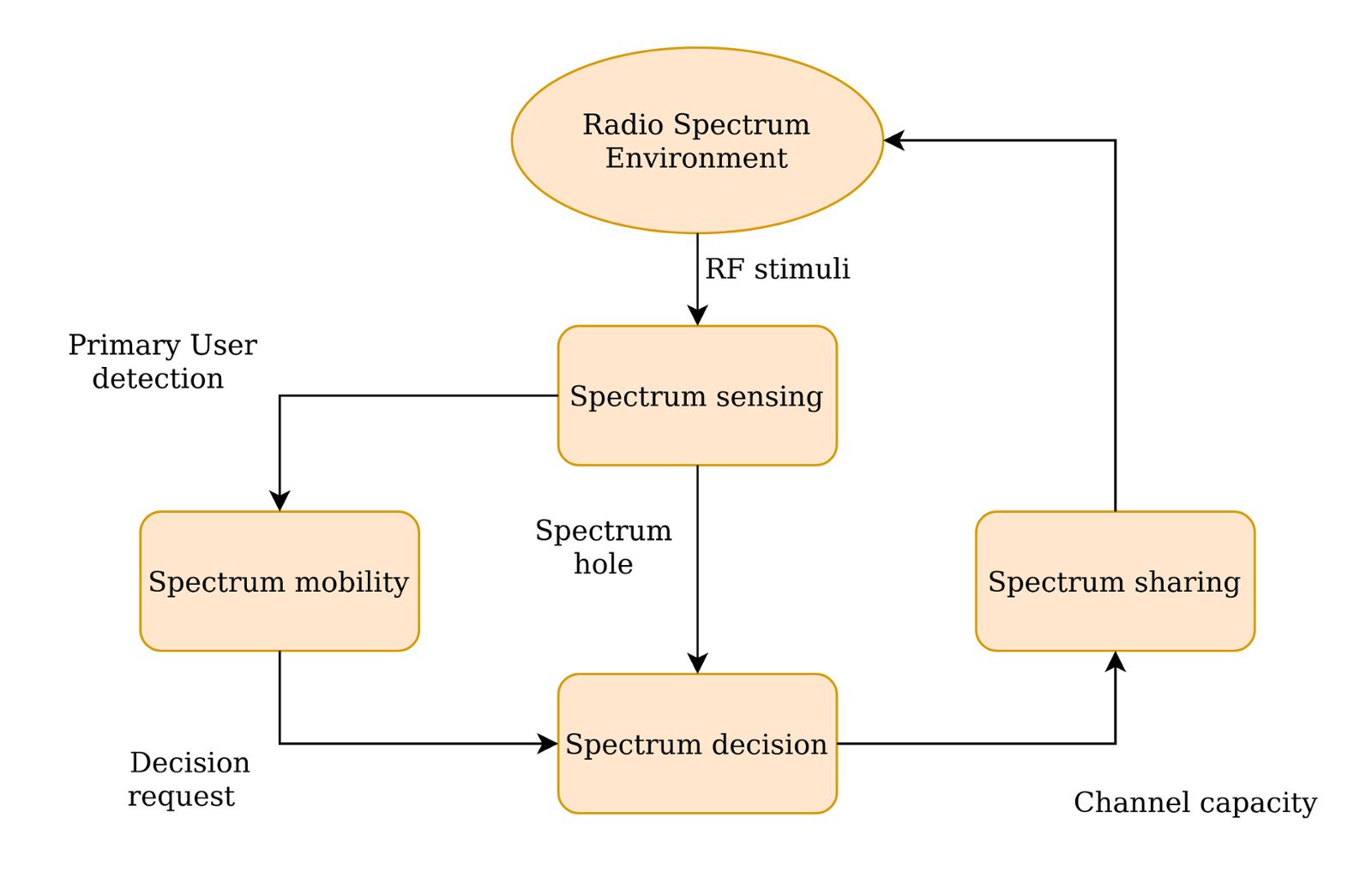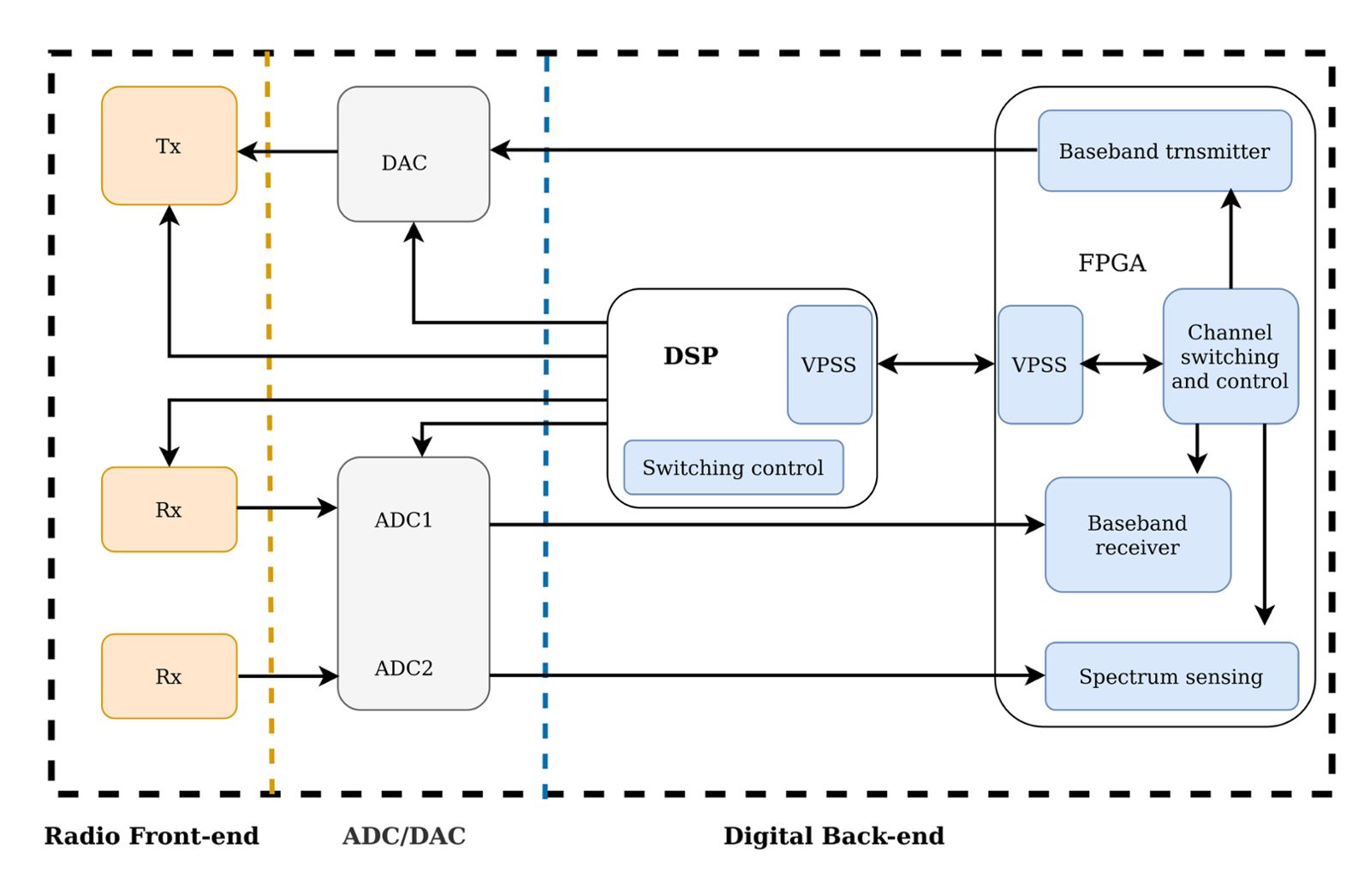SDR for Spectrum Monitoring, Management and Enforcement
By Brendon McHugh
This article focuses on the use of software defined radio (SDR) in the implementation of cognitive radio systems for spectrum monitoring. We discuss how SDRs can be combined with GNU Radio to implement complex spectrum sensing techniques that can be used for detecting the presence of signals in frequency bands of interest. In addition, the article explores how the multiple input multiple output (MIMO) architecture of an SDR platform can be used in applications that involve multiple antennas and directions.
Best Practices for Complying with RAY BAUM’s Act
House Subcommittee Approves Bill That Could Provide Up to $10B in NG 911 Funding
Video Analytics Offers Improved Situational Awareness, Operational Intelligence
Cognitive Radio and Spectrum Sensing
The fixed frequency allocation policy is highly inefficient and has resulted in a scarcity of spectral resources. As the number of connected devices continues to increase with advancements in wireless technology and adoption of the internet of things (IoT), the demand for spectrum is expected to increase exponentially. With the current trend, a huge amount of spectrum will be required to support new and emerging technologies.
A cognitive radio (CR) is a wireless communication technology that is capable of solving spectral congestion. This technology employs a transceiver that intelligently monitors the occupancy of frequency channels. Its ability to detect and use unoccupied channels ensures efficient utilization of spectrum.
A cognitive radio identifies and utilizes unoccupied frequency channels without generating harmful interference. This capability makes it possible for other services to use unoccupied licensed channels without interfering with the primary users. To identify such transmission opportunities, CR utilizes spectrum-sensing algorithms to monitor channel occupancy. This process entails calculating binary hypothesis testing with the null hypothesis corresponding to the absence of a primary user’s signal and alternate hypothesis indicating the presence of it.
A typical CR employs software-based algorithms to monitor spectrum, detect unoccupied channels and adapt radio signal parameters to utilize available bands. Some of the most common adaptations include adaptation to jamming signals, adaptation to varying noise and adaptation to decrease chances of detection.
Several methods for sensing unoccupied frequency channels have been developed and tested. They include energy detection sensing, cyclostationary-based sensing, wavelet-based sensing, waveform-based sensing, matched filtering and eigenvalue-based sensing. The energy detection method entails comparing the energy of the received signal with a threshold. Unlike the matched filter method, this technique does not require prior knowledge of the primary user signal. Figure 1 above shows a simplified diagram of an energy detection sensing system.
Matched filter spectrum sensing uses correlation method to detect presence of known primary user signal in a frequency band of interest. This method entails maximizing the signal-to-noise ratio (SNR) of the output and requires prior knowledge of the primary user signal. The eigen-value based sensing technique uses a correlation method to detect the presence of a primary user signal in the received signal. A sample covariance matrix provides test statistics required for detecting the presence of a primary user’s signal.
There are many challenges that limit massive use of spectrum-sensing technologies. To start with, although the energy detection method is widely used for monitoring energy in frequency channels, it is not capable of determining if the detected energy contains communication signals or not. In addition, the performance of energy detectors declines with variations in signal-to-noise ratio (SNR).
The complexity of cyclostationary detectors is one of the main factors that limit its adoption. In the case of the matched filter sensing method, it is the need for previous knowledge of the signal used by the primary user that hinders the adoption of the technology. Another factor that limits use of these technologies is lack of information about the occupancy status of a frequency band in most commercialized applications. In addition, it can be difficult to distinguish between the signal of the primary user and background noise.
Sensing technologies are required to take minimal time in order to ensure that the throughput of a wireless communication system is not compromised. This requirement makes slow and very complex sensing technologies undesirable. Distributed cooperative sensing schemes employ a repetitive procedure to make a cooperative decision. These distributed schemes yield a cooperative sensing delay whose size is mainly determined by the number of iterations involved.
Uses of Spectrum Sensing and CR
The demand for radio spectrum is expected to continue growing exponentially as the adoption of new technologies such as IoT and 5G increases. Some of the main features of the 5G CR network include enhanced mobile broadband, massive machine-type communication and ultra-reliable low-latency communication. Compared to its predecessor, the 5G CR network is expected to provide high cost efficiency, optimal energy use, high data rates (Tbps), high connection density (100 times higher), very low latency (10 times lower) and high automation capacity.
In order to achieve high spectrum and energy efficiency, it is critical to utilize the latest spectrum sensing and transmission technologies. Optimal performance is achieved by combining the latest channel coding methods, modern multi-antenna technologies, advanced multiple access approaches and latest waveforms. Use of artificial intelligence (AI) and machine learning technologies helps to further enhance the performance of CR in spectral decision-making.
Once an unoccupied band has been identified, it is critical to use a combination of radio parameters that yield optimal utilization. These parameters include radio parameters, such as SIR and SNR; performance parameters, such as frame error rate (FER), bit error rate (BER), and packet delay; radio capability parameters, such as power level; and physical conditions, such as speed and location. The relationship between parameters can be pre-programmed into a radio to enable it to calculate important parameters such as power and speed. For instance, the required power can be calculated from expressions that relate bit error probability and modulation schemes.
Many projects aimed at enhancing spectrum utilization have been initiated and plans to deploy some of them worldwide are underway. One of such projects is the DARPA XG communications project sponsored by the Defense Advanced Research Projects Agency (DARPA). The goal of this project is to develop concepts and technologies to allow dynamic redistribution of spectrum for improved military communication. Moreover, CR can benefit military applications in many other ways including adapting to noisy environments, adapting to jamming, and adapting to prevent detection.
Spectrum Monitoring, Management and Enforcement
A typical monitoring system consists of a computer server that monitors the frequency channels of interest to identify frequency gaps. The system then transmits through the unoccupied channels and vacates it before the primary user returns. Such units utilize cognitive radio for continually observing radio frequency environments, creating plans and executing them. A simplified flow chart of a spectrum monitoring and sensing system is shown in Figure 2.

The capability of a CR to allow dynamic spectrum access makes it a suitable solution for mitigating the spectrum scarcity problem caused by rapid growth in technologies that require spectrum and use of inefficient spectrum utilization schemes. Unlike static spectrum management schemes, DSA schemes are designed to maximize spectrum by allowing spectrum sharing among radio systems. The fundamental idea of any dynamic spectrum access scheme is to allow secondary users to utilize the licensed frequency bands in a non-interfering manner when they are not in use by the licensed users.
As long as secondary users do not cause harmful interference, they are allowed to transmit in bands allocated to licensed users during periods of time when the spectrum is temporarily unoccupied. These temporarily unused frequency bands may exist in frequency, time and space domains and are commonly referred to as spectrum white spaces (WSs).
SDRs for CR and Spectrum Sensing
An SDR system features a radio front-end (RFE) that performs transmit (Tx) and receive (Rx) functions and a digital back-end that processes digitized signals. The RFE offers a broad tuning range of 0-18 GHz, making it suitable for a wide range of applications. This tuning range can be expanded to 40 GHz if an application demands a wider tuning range. In addition, the highest bandwidth SDRs offer up to eight independent radio chains, each with a very high bandwidth of up to 3 GHz.
The digital back-end of an SDR system features a field programmable gate array (FPGA) that is capable of performing various digital signal processing operations including modulation, upconverting, demodulation and downconverting. This FPGA is also suitable for implementing AI/ML algorithms, such as the ones used for spectrum sensing. The reconfigurability of FPGAs allows new radio protocols and digital signal processing (DSP) algorithms to be implemented without modifying the hardware. Furthermore, the digital back-end is capable of packetizing data into Ethernet packets and transporting them over 10-100Gbps links.
The multiple channels of an SDR system have dedicated analog-to-digital converters (ADCs) and digital-to-analog converters (DACs ) and utilize very robust clocking to ensure phase coherence. Custom SDR platforms can be designed with size, weight and power (SWaP) features that match the demands of an application. Furthermore, high performance SDR platforms are designed to support a wide range of signal processing software development toolkits such as GNU Radio.
One of the critical tasks in developing a CR system using SDR is implementing a spectrum-sensing algorithm. The algorithm can be implemented either on a host computer or on an FPGA. GNU Radio allows implementation of a broad range of sensing techniques. For instance, various techniques have already been implemented in GNU Radio including eigenvalue-based detection and energy detection algorithms. Figure 3 shows an SDR-based cognitive radio with spectrum sensing.

Some of the main challenges in developing sensing algorithms include reducing cooperation overhead and implementing efficient information-sharing algorithms. The impressive capabilities of SDR systems make them suitable for implementing and testing spectrum sensing solutions. Such algorithms can first be developed in a programming language such as C++ or Python. When the algorithm has been properly tested and confirmed to work as expected, a version that can run on the highly parallel FPGA can then be developed. The low noise figure and high spurious free dynamic range (SFDR) of the high performance SDR systems makes it easier to detect primary users from the noise floor.
High-performance SDR platforms offer very fast returning times, thereby allowing a secondary user radio to change to another frequency channel within the shortest time possible. The flexibility of these platforms allows modulation and demodulation schemes to be changed easily and quickly. In addition, the high data throughput of SDR systems makes them suitable for CR tasks with demanding data processing requirements.
CR utilizes intelligent algorithms to enable secondary users to use unoccupied licensed channels without causing harmful interference. Unlike static frequency allocation schemes, dynamic spectrum access ensures efficient use of the finite spectrum and creates space for new and emerging applications. SDR platforms are highly flexible and offer capabilities that allow implementation of complex CR and sensing solutions for use in spectrum monitoring and management.
Brendon McHugh is a field application engineer and technical writer at Per Vices, which has extensive experience in developing, building, and integrating software defined radios (SDR). Brendon is responsible for assisting current and prospective clients in configuring the right SDR solutions for their unique needs. He possesses a degree in theoretical and mathematical physics from the University of Toronto.

